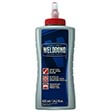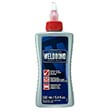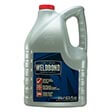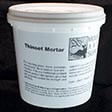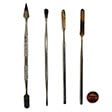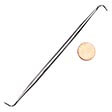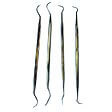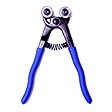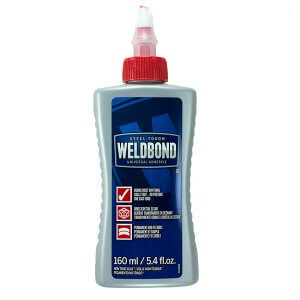Choosing the right adhesive for your mosaic
Picking the correct adhesive or glue is a very important decision when starting a mosaic, possibly the most important. If you choose the wrong one, your mosaic will not last as long as it should.
The best way to make a decision is to understand the different choices of adhesives and which ones works better with certain surfaces and tesserae. The primary deciding factor will be where the mosaic will live once it is complete: indoors or outdoors.
Indoor mosaic glue
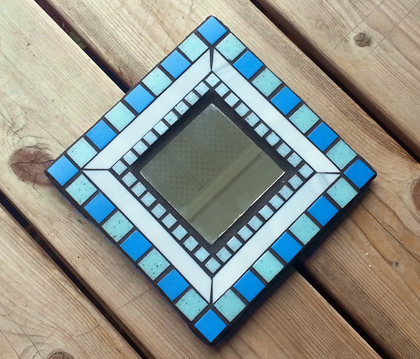
Weldbond is the best. It’s a water based PVA glue, has no fumes, dries clear and water resistant, bonds to most any surface, is non-toxic and cleans up easily. We’ve extensively tested it, which you can read about here. However, I prefer to use thinset bonding mortar for floors. It gives a more stable and durable walking surface and better resists water seepage when cleaning the floors.
Outdoor mosaic glue
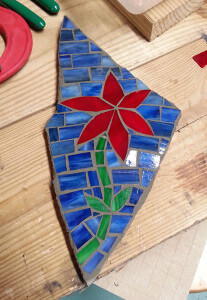
In choosing adhesive for outdoor mosaics, it’s probably best to avoid adhesives altogether and use thinset mortar (a sticky concrete with added polymers) instead. To use thinset, you should read and follow the instructions on the package for mixing, handling and disposal. We also have a guide to using thinset. In brief, thinset is like grout and other concrete products. This means that the best place to mix them up is outside, and you should wear a dust mask if have trouble mixing it up without creating a lot of dust. (Our artists merely stand upwind and mist it with a spray bottle until they get it mixed up.)
I usually mix up about 1 or 2 pounds at a time and smear it on the wall with a small trowel or putty knife. I spread it out to about 1/8″ to 1/4″ thick and press my mixed materials directly into the concrete. I wear rubber examination gloves and keep a damp rag so I can wipe away any excess that squeezes up to the face of the tiles. If you keep the concrete in the bucket covered so that it doesn’t dry out, then it should stay workable for several hours. I made the mosaic columns at the gallery using thinset mortar in this way. I always keep a small bucket with a little water and rag to clean my hands from time to time and a dry rag in my lap.
See our illustrated grouting tutorial for more details.
At this time, we no longer recommend using a construction adhesives in an outdoor environment. Use adhesives other than thinset at your own risk.
Read more about outdoor mosaic considerations.
Glue for marbles and round stones
Marbles and round stones can be a challenge. Unless they are being pressed into cement face-up on a horizontal surface like stepping stones, the right adhesive choice is important. You may be able to use a thick cosntruction adhesive for this purpose, though it isn’t recommended to do this for outdoor mosaics. It is probably best to use thinset in these cases.
Understanding Different Types of Mosaic Adhesives
PVA GluesPVA glues like Welbond are water soluble adhesives that will clean up with water. PVA glues should not be used on any outdoor project. Even if it isn’t exposed to rain, humidity can also loosen the bond. When working in the indirect method, PVA glue can be used to adhere tiles to fiberglass mesh. It also bonds well with any type of tile and wooden or acrylic surfaces. Again, Weldbond is the best and it dries clear.
Thinset MortarThinset is a sticky cement which can be messy to work with, but it is necessary for outdoor projects if you want them to hold up. It can be found at any hardware store, and is often only sold in large quantities. The best surfaces for thinset are porous, such as cement, cement backerboard, and wood and terracotta. To use with non-porous surfaces like glass, the thinset has to be mixed with admixes instead of water, which are either latex or acrylic liquids that make the thinset sticky. Premixed thinset is not as good as dry mix.
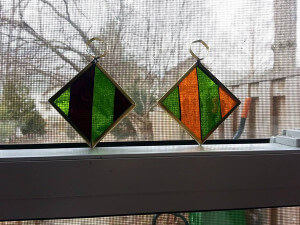
Silicone is used most often on glass surfaces because it comes in transparent varieties. It usually comes in a caulking tube and can take some time to get used to. It is difficult to remove and if you apply too much, it will come up between the tiles and make grouting more difficult and incomplete. When used under larger sheets, the areas towards the inside may never cure completely.
EpoxyEpoxy is used on metal surfaces, but works on wood and glass also. It can hold up outdoors in ideal conditions, but it is very difficult to use and has a noxious odor. Once it is mixed, it must be used quickly. But when it is used successfully and correctly, it is a very strong adhesive and it dries clear.
Other GluesIn speaking with other mosaic artists, you will likely find that everyone has their own preferences for adhesives and that they are used in different ways from artist to artist. Understanding the characteristics of each type of adhesive will help you in finding the best solution for you in your various projects. When working with a new glue, be sure it is what you need for your project. Is it for interior or exterior, is it toxic, and will it work with your surface? Other than Welbond, the most popular brands for mosaics are Liquid Nails, MacGlue, and Gorilla Glue. Once you’ve experimented with several types of adhesives, you will get a feel for what you prefer and what works best.
NOTEAlways clean up excess glue before you grout. After water soluble glue has dried for a day or two, I come back and mist the mosaic with water. After about 10 minutes, any traces of glue that are sticking up on the sides of the tile will start to turn white. I then take a razor knife like a box cutter or exacto knife and trim away the excess glue. This cleaning step ensures that there will be no glue sticking up and not covered by grout.
